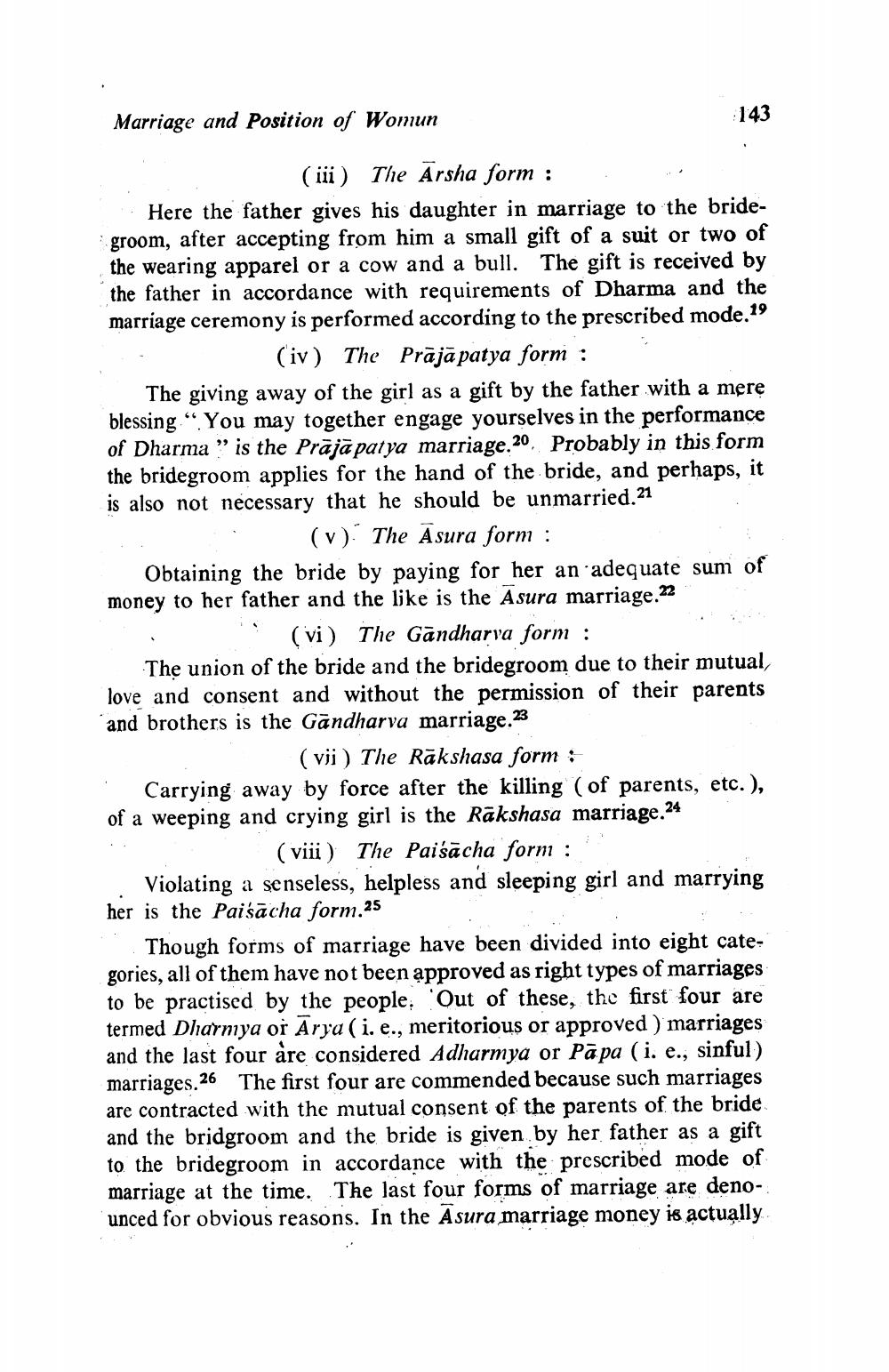________________
Marriage and Position of Womun
143
(iii) The Arsha form :
Here the father gives his daughter in marriage to the bridegroom, after accepting from him a small gift of a suit or two of the wearing apparel or a cow and a bull. The gift is received by the father in accordance with requirements of Dharma and the marriage ceremony is performed according to the prescribed mode.19 (iv) The Prajapatya form :
The giving away of the girl as a gift by the father with a mere blessing" You may together engage yourselves in the performance of Dharma" is the Prajapatya marriage.20. Probably in this form the bridegroom applies for the hand of the bride, and perhaps, it is also not necessary that he should be unmarried.21
(v) The Asura form :
Obtaining the bride by paying for her an adequate sum of money to her father and the like is the Asura marriage.22
(vi) The Gandharva form :
The union of the bride and the bridegroom due to their mutual, love and consent and without the permission of their parents and brothers is the Gandharva marriage.23
(vii) The Rakshasa form:
Carrying away by force after the killing (of parents, etc.), of a weeping and crying girl is the Rakshasa marriage.24
(viii) The Paisacha form:
Violating a senseless, helpless and sleeping girl and marrying her is the Paisacha form.25
Though forms of marriage have been divided into eight categories, all of them have not been approved as right types of marriages to be practised by the people. Out of these, the first four are termed Dharmya or Arya ( i. e., meritorious or approved) marriages and the last four are considered Adharmya or Papa (i. e., sinful) marriages.26 The first four are commended because such marriages are contracted with the mutual consent of the parents of the bride. and the bridgroom and the bride is given by her father as a gift to the bridegroom in accordance with the prescribed mode of marriage at the time. The last four forms of marriage are denounced for obvious reasons. In the Asura marriage money is actually




